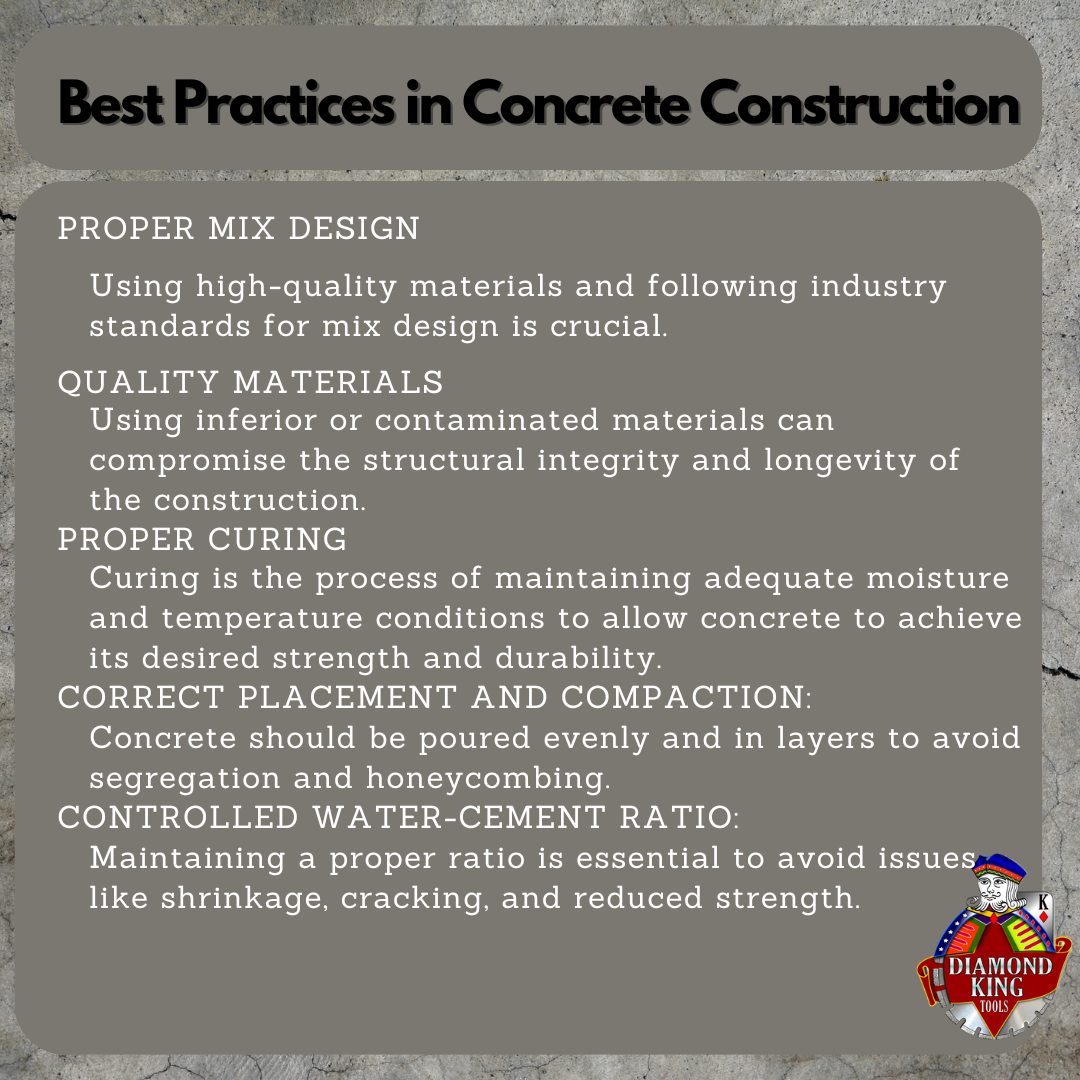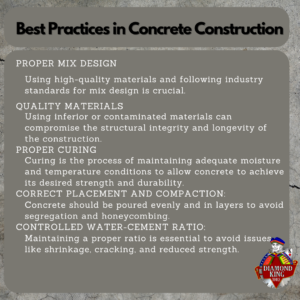Concrete is one of the most widely used construction materials globally, known for its durability, strength, and versatility. From skyscrapers to bridges, dams to sidewalks, concrete plays a crucial role in modern infrastructure. However, achieving optimal results in concrete construction requires adherence to best practices. In this blog post, we’ll delve into some key best practices that ensure successful concrete construction projects.
1. Proper Mix Design
The foundation of a durable concrete structure lies in its mix design. Engineers must carefully calculate the right proportions of cement, aggregates (such as sand and gravel), water, and additives (if needed) to achieve the desired strength, workability, and durability. Using high-quality materials and following industry standards for mix design is crucial.
2. Quality Materials
The quality of materials used directly impacts the final outcome of the concrete. Using inferior or contaminated materials can compromise the structural integrity and longevity of the construction. Ensure that cement, aggregates, water, and admixtures meet the required specifications and are sourced from reputable suppliers.
3. Proper Curing
Curing is the process of maintaining adequate moisture and temperature conditions to allow concrete to achieve its desired strength and durability. Proper curing prevents cracking, increases strength, and enhances the concrete’s resistance to environmental factors. Methods such as wet curing, membrane curing, or using curing compounds should be applied as per project requirements.
4. Correct Placement and Compaction:
During concrete placement, attention to detail is crucial. Concrete should be poured evenly and in layers to avoid segregation and honeycombing. Adequate compaction using vibrators or other suitable equipment ensures that air voids are eliminated, enhancing the concrete’s density and strength.
5. Controlled Water-Cement Ratio
The water-cement ratio greatly influences concrete’s strength and durability. Maintaining a proper ratio is essential to avoid issues like shrinkage, cracking, and reduced strength. Excessive water can weaken the concrete, while insufficient water leads to poor workability. Strive for a balance that achieves both strength and workability goals.
6. Proper Formwork Installation
Formwork provides the shape and support for freshly poured concrete until it gains sufficient strength. Correct formwork installation ensures accurate dimensions, prevents leakage or bulging, and results in a smooth finish. Regular inspections of formwork and adequate bracing are essential to avoid failures during concrete placement.
7. Thorough Quality Control & Testing
Quality control measures, including regular testing of concrete samples for strength, consistency, and other properties, are critical throughout the construction process. Conducting slump tests, compressive strength tests, and checking for air content helps identify any issues early on, allowing for timely adjustments and corrections.
8. Proper Jointing and Finishing
Joints in concrete structures accommodate thermal expansion, shrinkage, and movement, reducing the risk of cracking. Proper jointing techniques, including saw cutting or forming joints at the right locations, are essential. Additionally, finishing techniques such as troweling, curing compound application, and surface sealing contribute to the concrete’s appearance and durability.
9. Adherence to Safety Standards
Safety should always be a top priority in concrete construction. Workers must follow safety protocols, wear appropriate personal protective equipment (PPE), and be trained in handling equipment and materials safely. Adhering to local building codes and regulations ensures that the construction meets required safety standards.
10. Regular Maintenance and Inspection
Once the concrete structure is in place, regular maintenance and inspections are crucial for long-term performance. Monitor for signs of wear, corrosion, or damage, and take prompt corrective actions to prevent issues from escalating.
By following these best practices in concrete construction, engineers, contractors, and construction teams can ensure the successful completion of projects with durable, high-quality concrete structures. Attention to detail, adherence to standards, and a commitment to excellence are key elements in achieving optimal results in the construction industry.



